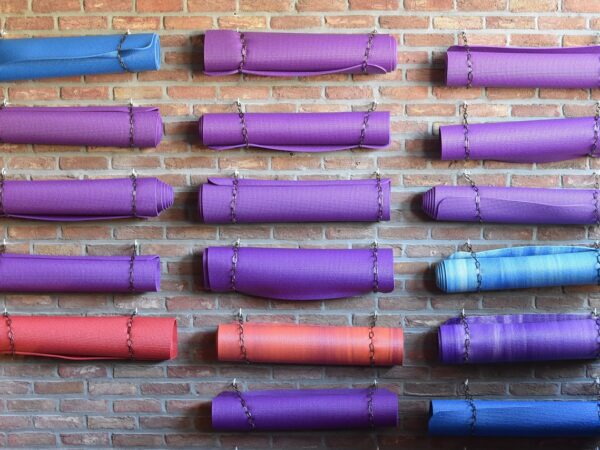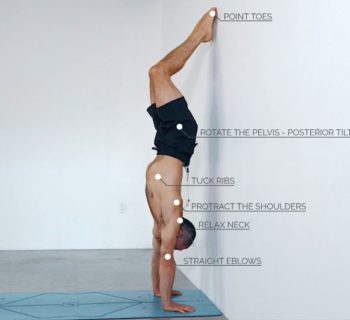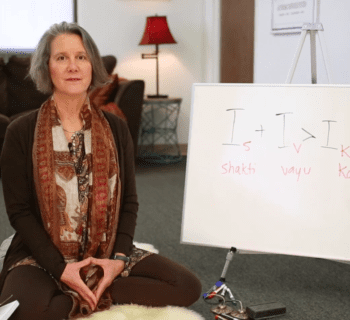As a beginner yoga practitioner, you might be wondering how long it will take for you to become flexible. The truth is, there is no one-size-fits-all answer to this question. Your flexibility journey depends on various factors, such as your age, body type, and how often you practice. However, understanding the science behind flexibility can give you a better idea of the time frame it takes to become more limber and get the results you’re hoping for. Let’s take a look at the different factors that affect flexibility and learn about the optimal ways you can improve your flexibility.
What is flexibility?
Flexibility refers to the range of motion in your joints and muscles. The more flexible you are, the easier it is to move your body in different directions. Flexibility is important for overall health and wellbeing because it helps prevent injuries, improve posture, and reduce muscle tension.
What are the benefits of being flexible?
Before diving into the science behind flexibility and how to improve it, let’s take a moment to appreciate the benefits of being flexible. Here are some reasons why flexibility is essential for your health and wellbeing:
1. Reduces the Risk of Injury: When you have a wider range of motion, your body is less prone to injury. This is because flexible muscles and joints can absorb shock better, reducing the chances of sprains, strains, and tears.
2. Improves Posture: Tight muscles can pull your body out of alignment, leading to poor posture. Flexibility helps to lengthen and loosen these muscles, promoting a better posture.
3. Relieves Muscle Tension: Tight muscles can cause discomfort and pain, leading to muscle tension. Flexibility helps to release this tension, reducing pain, and improving your overall comfort.
4. Enhances Athletic Performance: Flexible muscles can help improve your athletic performance, as they allow you to move more efficiently and with greater ease.
5. Reduces Stress: Flexibility exercises, such as yoga, can be a great way to reduce stress and promote relaxation. These exercises help to release muscle tension and can have a calming effect on the mind.
Factors Affecting Flexibility
There are several factors that affect your flexibility, including age, genetics, and physical activity. As you age, your muscles and joints become stiffer, making it harder to maintain flexibility. Genetics also play a role in determining flexibility, as some people are naturally more flexible than others. Finally, physical activity, including yoga, helps to improve flexibility by stretching your muscles and increasing their range of motion.
Age
As we age, our muscles and joints become stiffer, leading to a decrease in flexibility. This is because the collagen fibers in our muscles and connective tissues become less elastic, making it harder to stretch them. Additionally, the natural wear and tear of our joints can lead to stiffness and decreased range of motion. This change happens gradually and noticing it may take some time.
However, when you do notice that your flexibility has decreased you can still do things to improve it. Regular stretching and yoga practice can help maintain and even improve your flexibility, regardless of your age. It’s important to start slowly and work gradually towards more challenging poses. Pushing too hard too soon can lead to injury. With patience and persistence, you can continue to improve your flexibility and overall yoga practice, no matter your age. In the beginning, try practice more than twice weekly and monitor your flexibility for improvements.
Genetics
Genetics play a role in determining an individual’s flexibility. Some people are naturally more flexible than others due to their genetic makeup. For example, some people have longer muscle fibers or more elastic connective tissue, which allows for greater flexibility. However, this does not mean that those with less natural flexibility cannot improve their flexibility through regular stretching and yoga practice. While genetics can influence our starting point, it is important to remember that progress is always possible with dedication and consistency. So, regardless of your genetic predisposition, you can work towards improving your flexibility and reaping the benefits of a more limber body and mind.
Physical activity
Engaging in activities such as yoga, Pilates, dance, and gymnastics can all help improve flexibility by stretching and lengthening muscles and connective tissues. Additionally, incorporating strength training can help improve joint stability and range of motion, allowing for greater flexibility. However, it’s important to find a balance between these two types of exercise, as overstretching or overworking muscles can lead to injury and decreased flexibility. Incorporating a variety of physical activities into your routine can help improve flexibility while also providing other health benefits such as increased cardiovascular health and stress reduction.
Lifestyle
Lifestyle factors such as diet, hydration, and stress levels can also impact flexibility. A diet high in processed foods and low in nutrients can lead to inflammation and stiffness in the body, making it more difficult to achieve greater flexibility. On the other hand, a diet rich in whole foods and hydration can help keep muscles and connective tissues pliable and flexible.
Stress can also play a role in flexibility, as tension in the body can lead to tightness and decreased range of motion. Incorporating stress-reducing practices such as meditation, deep breathing, and restorative yoga can help release tension and improve flexibility over time.
How long does it typically take to become flexible?
Becoming flexible is a process that varies from person to person and depends on various factors such as age, genetics, and physical activity, but with regular practice and dedication, you can improve your flexibility over time. Unfortunately, there is no fast way to make your muscles more limber.
If you are a beginner yoga practitioner, you may notice some improvements in your flexibility after just a few weeks of practicing yoga regularly. However, it may take several months or even years to achieve significant improvement in your flexibility, depending on your starting point and level of commitment.
It is essential to remember that flexibility is not the only goal of yoga practice. Yoga also helps to improve strength, balance, and overall well-being. So, even if you don’t become super flexible, you can still enjoy the many benefits of yoga as a regular part of your fitness routine.
The key to improving your flexibility is to practice yoga regularly and consistently. Incorporate a variety of yoga poses that target different muscle groups and gradually increase the intensity and duration of your practice. Over time, you may notice that you are able to deepen your stretches and hold poses for longer periods.
Improving Flexibility
There are several things you can do to help speed up the process of becoming more flexible. Practice yoga regularly, as the more you practice, the more flexible you’ll become. Listen to your body and don’t push yourself too hard. Overstretching can lead to injury and can slow down your progress. With those tips in mind, let’s look at the types of stretching you can use to become more flexible.
Dynamic stretching
Dynamic stretching is a form of stretching that involves moving your muscles through their full range of motion. This type of stretching is helpful in improving flexibility, as it prepares your body for physical activity by increasing blood flow and muscle activation. Dynamic stretching is typically done before a workout or yoga practice, to help warm up the muscles and prevent injury.
Some examples of dynamic stretching exercises include leg swings, arm circles, and lunges. These movements are done in a controlled manner, gradually increasing the range of motion over time. Dynamic stretching can also be specific to the type of workout or activity you are about to do, such as practicing sun salutations before a yoga session.
Overall, dynamic stretching is a great way to improve flexibility and prevent injury. It is important to remember to always listen to your body and work within your limits, gradually increasing the intensity of your stretches over time. Incorporating dynamic stretching into your daily routine can also help improve your overall physical health and well-being.
Static stretching
Static stretching, on the other hand, involves holding a stretch in one position for an extended period of time, typically 20-30 seconds. This type of stretching is best done after a workout or physical activity, as it helps to cool down the muscles and prevent soreness or injury. Static stretching can also be done on its own as a separate stretching routine.
Examples of static stretches include the hamstring stretch, quad stretch, and calf stretch. These stretches involve holding a position without any movement, allowing the muscles to gradually release and lengthen over time.
Static stretching is great for improving overall flexibility, as it helps to increase blood flow and range of motion in the muscles. However, it’s important to remember to never push your body too far beyond its limits, as this can cause injury or strain. Always listen to your body and work within your own physical capabilities.
Incorporating both dynamic and static stretching into your routine can help you improve your flexibility over time, and prevent injury or soreness from physical activity or exercise.
Active stretching
Active stretching is another type of stretching that involves using your own muscles to hold a position without any external assistance. This type of stretching is often used in yoga and involves holding a position for an extended period of time while using your own strength to maintain the stretch.
Examples of active stretches include the warrior pose and downward facing dog. These stretches require you to use your own muscles to hold the position, which helps to improve strength and flexibility over time.
Active stretching is also beneficial for improving balance and stability, as it requires you to engage your core muscles and maintain control throughout the stretch. It can also help to prevent injury by strengthening the muscles and increasing range of motion.
It’s important to note that active stretching should always be done within your own physical capabilities and limitations. It’s also recommended to warm up with dynamic stretching before engaging in active stretching and to cool down with static stretching afterward.
Incorporating active stretching into your yoga practice can help to improve your overall physical health and well-being, while also enhancing your yoga experience. With consistent practice and patience, you can achieve greater strength, flexibility, and balance through active stretching and yoga.
Passive stretching
Passive stretching is a type of stretching that involves using external assistance, such as a yoga strap, block, or another person, to help you achieve a deeper stretch. This type of stretching is often used in yoga and involves holding a position with the assistance of a prop or external force.
Examples of passive stretches include the seated forward fold with a strap, reclined spinal twist with a block, and pigeon pose with a bolster. These stretches can help to increase flexibility and range of motion by allowing you to stretch deeper than you would be able to on your own.
Passive stretching is also beneficial for relaxing the muscles and promoting a sense of calmness and relaxation. It can be especially helpful for those who have tight muscles or limited mobility, as it allows you to gradually work towards a deeper stretch over time.
It’s important to note that passive stretching should always be done slowly and gently, without forcing the body beyond its limits. It’s also recommended to warm up with dynamic stretching before engaging in passive stretching, and to cool down with static stretching afterward.
Incorporating passive stretching into your yoga practice can help to improve your overall physical and mental health, while also enhancing your yoga experience. With consistent practice and patience, you can achieve greater flexibility and relaxation through passive stretching and yoga.
Proper form
Proper form is crucial when it comes to stretching, whether it’s active or passive stretching. Proper form ensures that you’re targeting the intended muscles without causing unnecessary strain on other parts of your body. It also helps to prevent injuries and ensures that you’re getting the most out of your stretches.
When stretching, it’s essential to pay attention to your body’s alignment and avoid any movements that cause pain or discomfort. If you’re unsure about the correct form for a particular stretch, it’s best to seek guidance from a qualified yoga teacher or fitness professional.
It’s also important to remember that stretching should be done gradually and slowly. Rushing through stretches or pushing your body too far beyond its limits can result in injuries or muscle strains. Instead, focus on breathing deeply and letting your body respond naturally to the stretch.
Adequate rest and recovery
Rest and recovery are essential components of any exercise routine, including yoga. When we engage in physical activity, our muscles experience small tears and damage. This is a natural process that allows our muscles to grow stronger and adapt to the demands we place on them. However, without adequate rest and recovery, our muscles can become overworked and fatigued, leading to injuries and decreased performance.
Rest and recovery allow our muscles time to repair and regenerate. During rest periods, our bodies can focus on repairing damaged muscle fibers, replenishing energy stores, and reducing inflammation. This process is crucial for building strength and endurance, as well as preventing injuries.
In addition to physical benefits, rest and recovery also provide mental benefits. Yoga and other forms of exercise can be stressful on the body and mind. Taking time to rest and recover can help to reduce stress levels, improve sleep quality, and enhance overall mental well-being.
It’s important to incorporate rest and recovery into your yoga practice by allowing for rest days and including activities that promote relaxation and recovery, such as meditation, deep breathing, and gentle stretching. By giving your body and mind the rest they need, you’ll be able to perform at your best and achieve your yoga goals.
Is there anything I can do to speed up the process of becoming flexible?
Yes, there are a few things you can do to speed up the process of becoming more flexible in your yoga practice:
1. Practice consistently: Make sure you practice yoga regularly, ideally three to four times per week. Regular practice will help your muscles become more accustomed to the movements, making it easier to stretch deeper over time.
2. Warm up properly: Always take the time to warm up before beginning your yoga practice. This will help your muscles become more pliable and less prone to injury.
3. Use props: Props such as blocks, straps, and blankets can help you achieve deeper stretches without straining your muscles. Don’t be afraid to use them to support your body as you work towards greater flexibility.
4. Focus on your breath: Deep, slow breathing can help you relax into your stretches and go deeper than you might otherwise be able to. Focus on breathing deeply and steadily throughout your practice.
5. Don’t push too hard: While it’s important to challenge yourself, pushing too hard can lead to injury and setbacks. Listen to your body and work slowly and steadily towards your goals. Remember that flexibility takes time, and progress will come with consistent practice.
How can I tell if I am making progress toward becoming more flexible?
As a beginner in yoga, it is common to wonder if you are making progress toward becoming more flexible. Here are some signs to help you mark your progress toward becoming more flexible:
1. Increased Range of Motion: One of the most obvious signs of increased flexibility is an increased range of motion. You may notice that you can move your body more easily into certain poses or that you can move deeper into poses that were previously uncomfortable or impossible.
2. Greater Ease and Comfort: As you become more flexible, you may notice that you are able to maintain poses for longer periods of time and with greater ease and comfort. You may also find that you are able to breathe more deeply and relax more fully into each pose.
3. Reduced Muscle Tension and Soreness: Increased flexibility can also lead to reduced muscle tension and soreness. This is because flexible muscles are better able to release tension and recover more quickly from physical activity.
4. Improved Posture: Improved flexibility can also lead to improved posture. This is because flexible muscles are better able to support the spine and maintain proper alignment.
5. Increased Energy and Vitality: Finally, increased flexibility can lead to increased energy and vitality. This is because flexible muscles are able to move more freely, allowing for greater circulation and oxygenation of the blood.
Remember that progress toward greater flexibility takes time and consistency. Be patient with yourself and celebrate each small improvement along the way.
Are there any exercises or stretches I can do to improve my flexibility?
Yes, there are many exercises and stretches you can do to improve your flexibility. Incorporating these into your yoga practice can greatly benefit you in the long run. Here are some exercises and stretches to try:
1. Standing forward bend: Stand with your feet hip-distance apart and slowly bend forward, reaching for your toes. Keep your knees slightly bent to protect your lower back.
2. Downward dog: Start on your hands and knees, then lift your hips up and back, coming into an inverted V-shape. Press your heels towards the ground and breathe deeply.
3. Cobra pose: Lie on your stomach with your hands on the ground under your shoulders. Slowly lift your chest off the ground, keeping your elbows close to your body.
4. Butterfly pose: Sit on the ground with the soles of your feet together and your knees bent out to the sides. Use your hands to gently press your knees towards the ground.
5. Seated forward bend: Sit on the ground with your legs straight out in front of you. Slowly bend forward, reaching for your toes. You can use a strap or towel to help you reach further.
Remember to take it slow and listen to your body. Don’t push yourself too hard and always honor any physical limitations you may have. Over time, with consistent practice, you will notice improvements in your flexibility.
What are some things I should avoid if I want to become flexible?
If you want to become flexible, there are certain things you should avoid in your yoga practice. Here are some of the most important ones:
1. Overstretching: It’s important to be patient and gentle with your body as you work on becoming more flexible. Overstretching can lead to injury and can actually slow down your progress.
2. Holding your breath: Breathing is a crucial part of yoga practice, especially when it comes to flexibility. Holding your breath can create tension in your muscles and prevent you from relaxing and releasing into each stretch.
3. Comparing yourself to others: Everyone’s body is different, and your flexibility journey will be unique to you. Comparing yourself to others can create unnecessary pressure and frustration, which can actually hinder your progress.
4. Skipping warm-up and cool-down: It’s important to prepare your body for stretching by warming up and giving it time to recover by cooling down after your practice. Skipping these steps can lead to injury and leave you feeling sore and stiff.
5. Pushing through pain: Pain is your body’s way of telling you something is wrong, and pushing through it can lead to injury. Instead, focus on finding your edge and working within your limits, gradually pushing them over time.
By avoiding these common mistakes, you’ll be on your way to a safer and more effective flexibility practice.
How can I maintain my flexibility once I have achieved it?
Once you have achieved your desired level of flexibility, the key is to maintain it through consistent practice and mindful movement. Here are some tips for maintaining your flexibility in yoga:
1. Practice regularly: Regular yoga practice is crucial for maintaining your flexibility. Aim to practice at least 3-4 times a week, or more if possible. Even 10-15 minutes of yoga each day can help to maintain your flexibility. The frequency of your practice is more important than the length of your sessions.
2. Focus on stretching: Incorporate stretching into your yoga practice to help maintain your flexibility. Stretching helps to lengthen and loosen the muscles, making them more flexible. Make sure to stretch all parts of your body, especially those that tend to be tight, such as the hamstrings, hips, and shoulders.
3. Use props: Props such as blocks, straps, and blankets can be helpful in maintaining your flexibility. They can help you to deepen your stretches, hold poses for longer periods, and support your body in challenging poses.
4. Practice different types of yoga: Try different styles of yoga to keep your practice fresh and challenging. Each style of yoga focuses on different types of movement and poses, which can help to maintain your flexibility in different ways.
5. Be mindful: Pay attention to your body and how it feels during your practice. If you feel tight or tense, take a break, and stretch gently. If you feel pain, back off from the pose and adjust or come out of it completely. Being mindful of your body’s needs and limitations is key to maintaining your flexibility safely and effectively.
In conclusion, flexibility is a crucial aspect of yoga, and achieving and maintaining it requires consistent practice, patience, and mindfulness. Remember to avoid common mistakes such as forcing your body into poses, neglecting to warm up, and pushing through pain. Instead, focus on finding your edge, working within your limits, and listening to your body. By incorporating stretching, using props, practicing different styles of yoga, and being mindful, you can maintain your flexibility and enjoy the benefits of a healthy, strong, and supple body. So, embrace the journey, and enjoy the many rewards of a regular yoga practice!
Is it easier to become flexible if I am already physically active?
As a beginner yoga practitioner, you might wonder whether it is easier to become flexible if you are already physically active. The answer is yes, being physically active can help you become more flexible.
When you are physically active, your muscles are in constant use and they adapt to the movements you make. This means that the more you move, the more your muscles will be able to stretch and become more flexible.
However, it’s important to note that while being physically active can help you become more flexible, it doesn’t necessarily mean you will automatically become a yoga master. Yoga requires a different kind of movement that specifically targets flexibility and balance, and it takes time and practice to become proficient in it.
If you are already physically active, incorporating yoga into your exercise routine can help you improve your flexibility even more. Yoga poses such as downward facing dog, triangle, and pigeon pose are great for stretching the muscles and increasing flexibility.
Conclusion
Incorporating proper form, stretching, and rest into your yoga practice can help you achieve your goals safely and effectively. As a beginner, it’s important to take your time, listen to your body, and seek guidance if needed. With consistent practice and patience, you’ll soon see the benefits of yoga on your physical and mental well-being. Remember to prioritize rest and recovery to prevent injuries and enhance your overall performance. By approaching your yoga practice with care and intention, you’ll be able to reap the many benefits of this ancient practice.
Photo by Luemen Rutkowski on Unsplash










